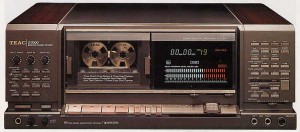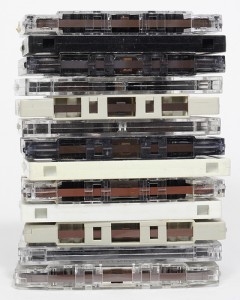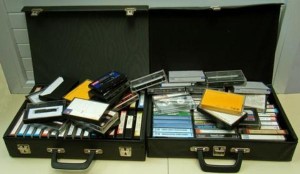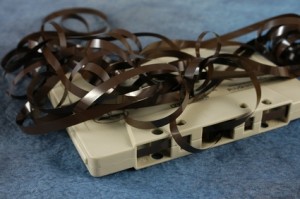
In the previous blog entry, Integrating Older Components into your Set-up. Part 1 of 2, we looked at how and why people are choosing to re-commission their vinyl records of yesteryear, by using their original, high-end turntables. As we've already addressed, cleaning and a service is an essential to allow for your traditional turntables to perform as close, or even as the same, as they did when they were fresh out of their boxes. This edition of the blog will address how to integrate the tape back into the everyday set-up. This will include a look at the cassette.

As the world moves on through format after format, some of us like to glance back at what we had before. But, due to the results of curiosity, people are finding themselves introducing their bygone machinery into their modern (and often digital) set-ups. The outcome of this has seen a lot more people practising this since, especially with the vinyl record - there is so much demand for vinyl, today, thanks to its loyal followers who have managed to get high street music chains to stock new releases on the traditional format.
One thing that people are finding is that recording music and broadcasts from various sources isn’t as popular as it used to be. It’s most likely because very few consumers record their own ‘mix tapes’ for their cars, purely as most modern vehicles use CD or an iPod/MP3 system. And, as a result, cassette recorders have become virtually obsolete. But, if you had masses of pre-recorded cassettes, you can still enjoy the cassette at its best if you maintain the machine and the cassettes as best as physically possible. But, it can also seem pointless to many as the titles released on tapes are most likely to be found at fair prices on both CD and format. However, many people who have owned certain titles on older formats, and not necessarily dedicated audiophiles, have often found that the way the music was mixed was better than that of its newer contemporary formats. This has sparked a revival amongst many as they wish to revive their collection into a modern set-up.

In order to appreciate older tape-based formats at their best, maintenance and servicing of the player is a high priority. Renewing drive bands will allow for a more accurate playing speed to be attained, giving a more accurate playback. Also, cleaning the transport mechanisms will give a smoother playback for accuracy, whilst helping to preserve the cassette tape in the long run. If dirt and dust is found, use a light-pressured air can to blow dust away from the mechanisms – but don’t use any potentially abrasive cleaner on any internal components! Also, if you feel it is required, demagnetizing the cassette player heads will allow for the tape’s surface to be read more easily, avoiding any muffling and muddiness to the high-end frequencies, mainly due to tape particles left from previous cassettes.
If the machine’s up to scratch, and performs as it is required to, re-commissioning the cassettes is the next step: if they have been stored correctly in a dry, cool environment and away from sunlight, they should perform as they did when they were new (if they haven’t been subjected to harsh environments and unfair conditions). But, if they have been located in either a cold, damp shed or garage, be aware that they may have lost their edge. Keeping them in damp conditions for extensive environments could lead to the tapes surfaces developing mould which can pass between tapes, ruining them beyond any means of cleaning or repair. The same principle applies if they’ve been subjected to hot environments – they could tend to stick and become shredded when they play; this is due to the transport mechanism in the cassettes jamming and the tape surface becoming melted from the hot conditions of their storage environment. But, if you’ve looked after them, there’s no reason why they shouldn’t perform as they were intended to do so.

All of this could be worthwhile if you wish to preserve those old memories, instead of them being replaced with a costly manoeuvre of buying them on newer digital formats.


